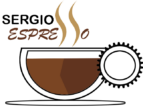Title
Introduction
Welcome to this blog post designed for aspiring product managers preparing for FAANG interviews. In these highly competitive settings, interviewers often pose practical, scenario-based questions to assess a candidate’s problem-solving and product thinking skills. Understanding and effectively using structured frameworks to answer these questions is essential for success. Today, we will be exploring how a product manager can create a tool enabling restaurants within a three-sided marketplace like Swiggy to create and fund their own promotional offers. Let’s dive into structuring a compelling response to this interview question.
Detailed Guide on Framework Application
a. Choosing a Framework
For our scenario, the most suitable framework to structure our answer is the CIRCLES Method™, outlined in ‘Decode and Conquer.’ This framework ensures a comprehensive approach to tackling product design questions.
b. Step-by-Step Guide on Framework Application
- Comprehend the Situation: Start by understanding the business context of Swiggy’s marketplace. Acknowledge the importance of restaurants, riders, and consumers in sustaining the platform’s ecosystem and identify the goal: empowering restaurants to drive sales through promotions.
- Identify the Customers: The primary users of our tool are the restaurant managers or owners who need an intuitive and effective way to launch promotions.
- Report the Customer’s Needs: Gather data on what restaurants require in a promotional tool, such as ease of use, customizable promotion options, scheduling features, analytics, and a clear ROI display.
- Cut Through Prioritization: Not all features are equally important. Prioritize must-have features that enable the creation and funding of promotions while ensuring a simple user interface.
- List Solutions: Generate a list of possible features, such as a promotion builder, budget tracker, analytics dashboard, and a success metrics display.
- Evaluate Trade-offs: For every feature considered, gauge the balance between the complexity of implementation, the cost, and the potential impact on the user experience.
- Summarize Your Recommendation: Conclude with a recommendation of the most essential features for the minimum viable product (MVP) and suggest a roadmap for future functionalities.
c. Hypothetical Examples
Imagine restaurant “A” wants to launch a 20% off promotion to boost sales on slow weekdays. Using our promotional tool, the owner can log in, use the promotion-builder feature to set discount parameters, and allocate a budget. The tool provides a real-time estimate of potential reach and ROI based on historical data.
d. Facts Checks
While specific data points about Swiggy’s operations might not be available, we can infer from industry standards that most restaurants aim for a 3-5% net profit margin. Thus, the promotional tool should require minimal investment and offer cost-effective strategies.
e. Approximations
For budgeting purposes, if we approximate an average order value of $15 and a discount of 20%, the restaurant would need to see a 25% increase in orders to maintain revenue parity. The tool can use this logic to advise on promotional spending.
f. Communication Tips
During the interview, it’s imperative to communicate assumptions clearly, ensure your explanations are structured and logical, and convey your ideas confidently. This demonstrates not only your problem-solving abilities but also your potential as a product leader.
Conclusion
In concluding, we can see how the CIRCLES Method™ effectively structures product design responses, providing clear guidance on addressing complex interview problems. Remember, the key to success is practice. By applying these frameworks and practicing regularly, you’ll develop the proficiency crucial for navigating FAANG product management interviews with confidence.
